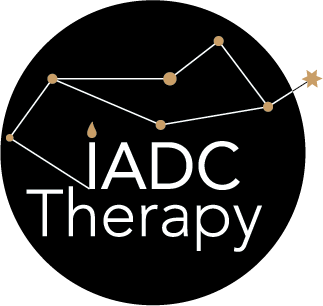
Welcome,
Sometimes death comes so violently that the very idea of “moving on” or “dealing with” the loss of a loved one seems impossible.
Beyond the need for comfort and the ability to rethink daily life, the bereaved must confront their own experiences, express them and sometimes share them. This is not always possible on their own.
Developed by Dr. Allan Botkin, an American psychotraumatologist, IADC (Induced After Death Communication) or CIAM (Communi- cation Induite Après la Mort) is a brief therapy targeted at traumatic or difficult to overcome grief. It differs from other approaches and techniques in that it allows for deeper and more permanent results, particularly in the case of insurmountable grief.
Each IADC session is unique. Patients who experience IADC therapy almost always report a very significant reduction in the sadness associated with the departure of their loved one and the various secondary losses that this can cause. They frequently report the resolution of unresolved issues in the relationship with the deceased, and they also report receiving answers to their questions, reassurance or assurance of the well-being of their deceased. Above all, and perhaps most significantly, patients report feeling a deep sense of connection with their loved one and experiencing a real transformation in their feelings of grief and separation.
Although most patients believe in the authenticity of the experience, religious or spiritual beliefs play no role in the effectiveness of the treatment. Therefore, a patient who believes that the phenomenon is based on neurobiology or other psycho-physical phenomena may receive the same benefit of healing and reduction of sadness as one who believes it is spiritual in nature. IADC therapy works equally well for people with minimal, residual grief as it does for those suffering from severe traumatic grief over the loss of a loved one.
The IADC therapeutic process is unique and individual and is spread over two sessions (to be re-evaluated if necessary) but can also be integrated into a psychotherapeutic treatment. We also attach great importance to the integration of the experience, i.e. to the way in which the patient appropriates his or her experience and gives it the necessary place in his or her daily life.
This site aims to introduce you to this approach and to give you access to a bibliography concerning the IADC technique and bereavement in general. There are now therapists who practice this technique in several countries, you will also find the list of accredited IADC therapists in Switzerland & France. Training courses for psychotherapists are also available for those who wish to practice this technique.

WHAT IS IADC THERAPY?
For over 25 years, Dr. Allan Botkin worked with patients in a hospital for veterans of the Vietnam, Korean and Iraq wars. After years of treating these victims of psychological trauma with behavioural therapy, in the 1990s he began experimenting with a relatively new and very effective treatment called EMDR or Eye Movement Desensitisation and Reprogramming. It was in this way that he stumbled upon Induced Death Communication (IDC) during a therapy session with Sam, one of these veterans, who was haunted by the memory of a young Vietnamese girl whom he had been unable to save. During the session, Sam had a vision of the girl’s spirit, which told him that all was well and that she was now at peace. This one moment had a deeper impact on him than years of therapy.
Since this discovery in 1993, Dr. Botkin has created a specific protocol, inspired by EMDR, to help his patients experience a unique bereavement experience that can significantly and sustainably reduce the sadness associated with the loss.
As he says in his book “what I discovered seemed to defy everything we knew about how to treat patients suffering from grief and trauma, and it allowed me to access a dimension of human experience that was previously unknown to me.”(Botkin, in Induced Communication with the Dead. 2014)
He has been practising this approach for over twenty years now and has trained therapists all over the US. In Europe, trainings started to be given from 2010.
